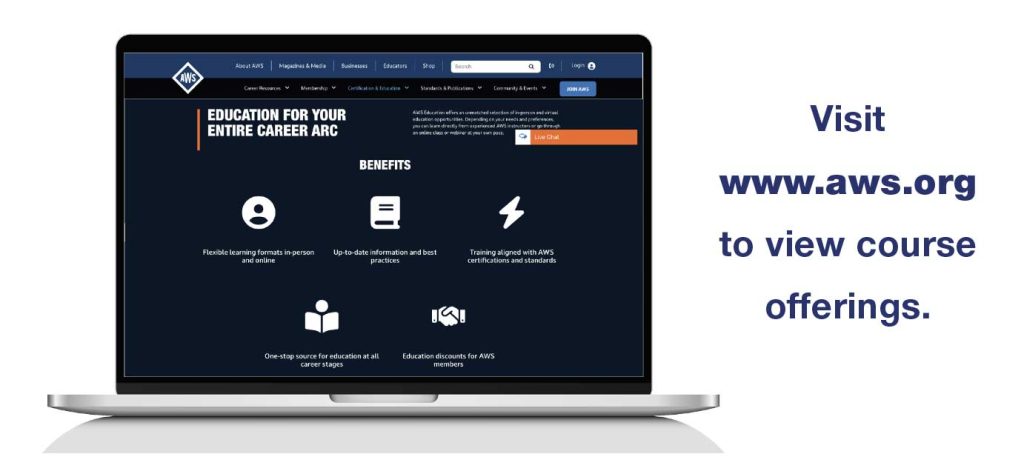After experiencing retired life for 90 days, I accepted the role of AWS Interim Executive Director and CEO for three key reasons. First, I wanted to strengthen our heritage of community engagement. We must give to the industry we love if we want it to prosper, and I see that love in the volunteer efforts of our AWS members. I hope that setting the bar high for myself inspires service in others.
Second, AWS has a broad and strong foundation with its employees, member network, finances, publications, conferences and events including FABTECH, certifications, educational courses, codes and standards. What we do is great.
Now I want to influence how we deliver it to improve the AWS experience; this is the third reason. My family company, RoMan Manufacturing, is a long-time practitioner of the Toyota Production System, and I’m bringing that mindset here to improve our business processes.
Go USA
I am fan of the acronym USA: Understand, Simplify and Automate. Instead of siloed management, we now have cross-functional project management teams to document our processes and map workflow to better understand how AWS delivers value. We can then simplify processes and test how we deliver products and services, looking through the lens of our member customers. For AWS, Automate especially means focusing on a better digital experience at hundreds of touchpoints, and our website is the nucleus.
The updated aws.org site, launched in October, offers more seamless navigation and quick links that make it easier to find content. As you browse through the site, I’d especially like to point out the new Certification Management section and the Online QuikCheck tool. Developed in response to member requests, this is the fastest way to verify AWS Certification credentials. In 2024, we will improve the searchability of research papers going back to 1970. For the hundreds of volunteers on our codes and standards committees, we will add editing tools so they can more readily collaborate.
Education
Distributors are an important part of the AWS community, and we value their insights into our performance and how they need to utilize our services. The best way we can leverage each other’s strengths is through more interaction, and, to that end, I would encourage distributors to serve on AWS committees, support their local AWS section, and participate in AWS events.
The recent Welding Automation Expo & Conference (where I delivered a keynote speech that touched on the USA theme), is a perfect example. The presentation given by MATHESON welding engineer Joe Wallace on how to effectively sell welding automation would have made the trip worth it for any distributor, as would the presentations on evaluating ROI and implementing cobots. With about 145 people in attendance, the interaction between participants drove up the energy and value of attending. For connecting with your peers and staying up to date on the latest trends and technologies in 2024, visit our Conferences & Events page and mark your calendars. Note that the Welding Summit runs from August 7-9 in Texas and FABTECH runs from October 15-17 in Orlando.
I would be remiss if I didn’t point out that AWS educational opportunities cover an entire career arc. We all know the challenge of training the generation of younger people coming behind us, which is why AWS offers many courses that cover the fundamentals of welding and the business of welding, making them well-suited for new distributor hires or those who want to advance their careers.
Courses such as Welding Sales Representative, Lean Management, Safety in Welding, Certified Welding Supervisor and the Productivity Solutions Bundle all enable distributor personnel to add more value in their customer conversations. You ask your customers what their pain points are, but an even better approach is to use your advanced knowledge to figure out the questions they should be asking, but are not.
Economic Thoughts
Using education to add value is a timeless topic, but I see it becoming more important in 2024. One of the leading indicators for the manufacturing sector’s health is the Purchasing Manager’s Index (PMI). A PMI below 50 indicates contraction, and the PMI has been below 50 since November 2022. Understanding where your customers are in relation to the PMI cycle is crucial. I would suggest that distributors pay close attention to the customer’s inventory levels and production plans. As much as possible, develop several relationships within an organization so you can triangulate data from multiple sources.
On a bright note, interest rates seem to have stabilized, but higher rates make it more challenging to justify capital expenditures after an era of nearly free money. Distributors need to be smarter and show manufacturers how they are productivity enhancers, and that goes back to education. The other part of that equation is that educational experiences also connect you with more people. Broadening your problem-solving network is always a good thing, and there’s no better place to do that than through AWS.









